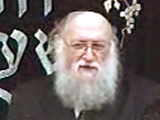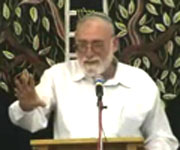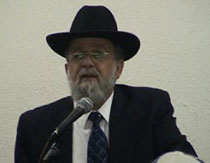Beit Midrash
- Sections
- Chemdat Yamim
- Parashat Hashavua
- Torah Portion and Tanach
- Torah Portion
- Bereshit
The Torah twice in Parashat Bereishit describes the creation of man. In Bereishit 1:26-27, it describes that Hashem created him in His own image and that the creation was "male and female." This creation was a complete one, performed on Friday, soon before Shabbat. He was placed into a physical world that included mineral, vegetable, and animal, but man was the only speaking creature and the only spiritual one. This complex world is one that contains the potential for great downfalls, which require much work to overcome, as we will explain.
On the first day, a special light was created, with which one could see from one edge of the world to the other. However, it could be misused by the wicked, so Hashem hid away this light for the righteous in the World to Come (Chagiga 12a). So we see that from the beginning, the problems raised by evil had an impact on the world.
The second day opened up the door to multiplicity, which is a challenge to unity. As we see in Tehillim 104 (3-4), which provides many insights into creation, the angels were created on this day. This is as opposed to on the first day in which Hashem was alone in the world. On this day, Hashem also created the raki’a, the firmament, which separated between the "water that is beneath it" and that which "is above it" (Bereishit 1:6-7). At that point in the history of the world, the potential for dispute even not for noble purposes began. This explains the fact that gehinom was created on this second day (Bereishit Rabba 4). While there is no use for gehinom before there are sinners, the time of potential for conflict, which is behind sin, began.
The first sign of actual sin surfaces on the third day, but we will view it as potential sin because it was "perpetrated" by an inanimate object. The land was supposed to sprout trees that tasted like the fruit they produced, but it failed to do so (Bereishit 1:11-12).
The fourth day uncovered a new danger, the pursuit of dominion and honor, as the sun and the moon competed for the lead, and the "sinful" moon had to be reduced (Chulin 60b, based on Bereishit 1:16). This characteristic represents the root for many sins.
Evil takes on a much more real form on the fifth day, in which living things were created in the water, and the one that is mentioned prominently is the tanin. Many sources relate it to the snake or the leviathan (see Yeshayahu 27:1). Tehillim 91:13 stresses Hashem’s dominion over dangerous animals, including the tanin, and tradition has it that the world’s approach toward perfection must include the tanin’s destruction (see Bava Batra 74b). The trop (Torah cantillation) unnaturally separates (with an atnachta) the creation of the tanin from the rest of the pasuk, which ends off "Hashem saw that it was good" because of the problematic nature of the tanin.

Parashat Hashavua: What’s in the Name of Noach?
Rabbi Yossef Carmel | Cheshvan 5786

“You Shall Do for Me a Sanctuary... Tabernacle”
Rabbi Yossef Carmel | 28 Shvat 5768

Parashat Hashavua: The Journey … from Charan to Mt. Moriah and Beyond
Rabbi Yossef Carmel | Cheshvan 5786























